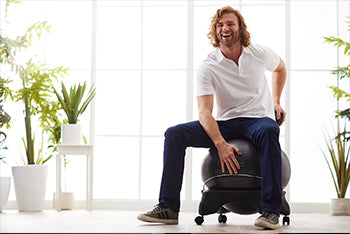Demystifying Mindfulness

Author: Laura Hobbs
Scrolling through your Facebook feed, you’re likely to come across one of the top buzzwords traversing today’s vast digital landscape: mindfulness. “How to Be More Mindful,” “Cultivate Mindfulness in 4 Easy Steps,” “How Technology is Affecting Your Mindfulness.” While these headlines all sound intriguing — and often leave us with a vague sense that we’re either 1) not doing it right or 2) should be doing something more — the term mindfulness is one that leaves a lot of us scratching our heads and wondering, “So…what is that, anyway?”
Let’s start with semantics. Merriam-Webster lends a (somewhat) helpful hand:
Mindfulness (n.) \ˈmīn(d)-fəl-nəs\
- the quality or state of being mindful
Oh, good. :/
- the practice of maintaining a nonjudgmental state of heightened or complete awareness of one's thoughts, emotions, or experiences on a moment-to-moment basis; also: such a state of awareness
A-ha! Now we’re onto something.
A term that’s widely used yet largely misunderstood, mindfulness has bumbled its way across today’s lumpy self-help terrain, suffering an unfortunate and unwarranted fall into the woo-woo new-agey category. In the spirit of salience and clarity, let’s take our definition one step further. Psychology Today defines mindfulness as:
A state of active, open attention on the present. When you're mindful, you observe your thoughts and feelings from a distance, without judging them good or bad. Instead of letting your life pass you by, mindfulness means living in the moment and awakening to experience.
Alright, this concept is beginning to gel. Mindfulness, in layman’s terms, is the act of being aware: aware of thoughts, aware of emotions, aware of physical sensations, aware of others.
Now, add to this awareness a sense of awakening. Think of the way the majority of us go through our daily lives. Because humans thrive on routine and predictability, our lives often become just that: a series of routines. We have our morning routines, our commute routines, our work routines, our evening routines. And eventually, these routines become — you guessed it — predictable. This predictability can eventually lead to auto-pilot mode, where we find ourselves cruising through our days, weeks, months, and years with a dull, colorless perception (or lack thereof) of the world around us. Boring and mind-numbing, right?
Right.
There’s a way out of the rut, and it’s through the practice of mindfulness. While we can practice mindfulness outwardly — paying more attention, listening more carefully, considering others more — we can also practice it inwardly through mindfulness meditation.
Wait, don’t go!
I promise, mindfulness meditation is approachable, helpful, and a great way to process the overload of information your brain absorbs every day. No monk robes required, no windswept mountaintops necessary. As I mentioned before, meditation is simply structured time for yourself to be quiet, reflect, and simply breathe. Ready to give your brain a break? Here are a few tips to get started.
- Start slowly. Rome wasn’t built in a day, and neither was a solid meditation practice. As a beginner, don’t get ahead of yourself by trying to sit for a long period of time. Start with three minutes and build from there. Your mind and body need time to adjust. When you feel ready, bump it to five minutes. Then seven. Then ten. And so on.
- Try the morning hours. As the day goes on, you’re less likely to get to the tasks you keep putting off. In the morning, your mind is fresher, clearer, and more open. This time is especially helpful if your home gets hectic later in the day.
- Stick with it. No doubt — you’ll get antsy. You’ll fidget. You’ll get frustrated. Sit with it and notice the emotions that arise. Feel them, observe them — and then watch them pass.
- Don’t overthink it. There’s nothing to “do” in meditation. You’re not trying to clear your mind of thoughts or think about only one thing; as humans, we’re hardwired to think. Focus on your breath, the sounds in the room, where your mind is going. In these quiet moments, you’ll be surprised what you hear.
- Make friends with yourself. Meditation isn’t a battle between you and your mind. Check in with yourself, ask questions, be curious. By bringing your attention to the present moment — and the thoughts created by it — you’ll get to know yourself better.
Take a few minutes and give it a go. Shut your laptop, turn off your phone, and find a comfortable seat. Don’t worry if you’re agitated or fussy in the beginning; give the mind-chatter some time to quiet down. After a few sessions, you’ll start to see small changes, and you’ll most likely find yourself being — imagine! — more mindful.
Also in Blog

Body Peace & Personal Empowerment

Yoga for Swimmers: Poses for Strength and Mobility







